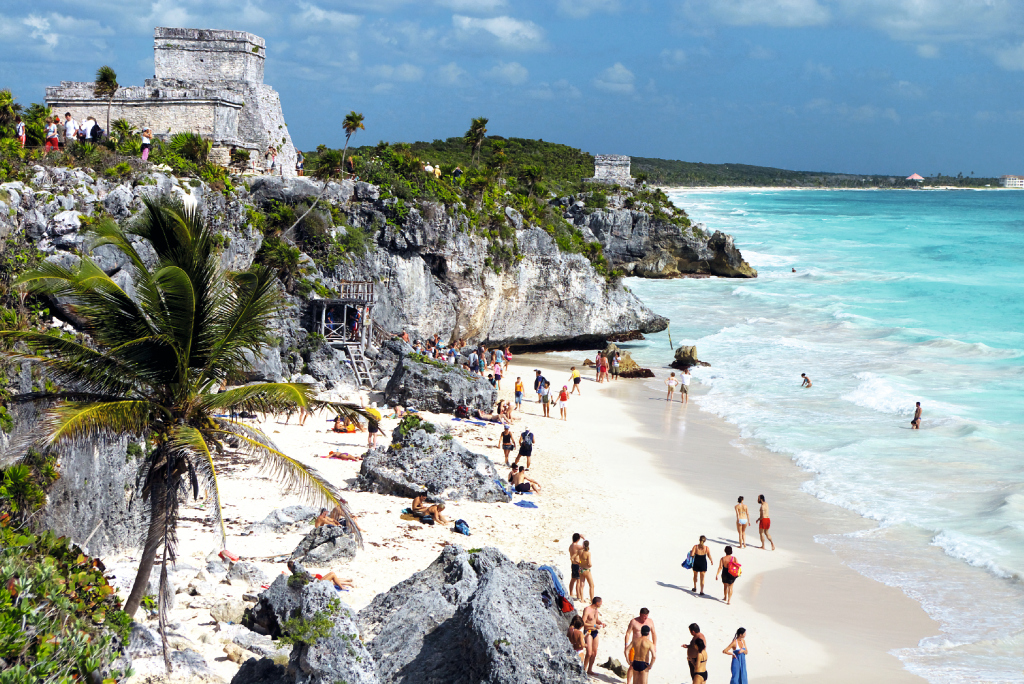Tulum

130 km south of Cancún is another important Mayan archaeological site in Mexico the temple town of Tulum! What is unique about this place is that it is located right beside the sea on a rocky plateau. Tulum is architecturally beautiful, its impressive location on the edge of the bright limestone cliffs, and the contrasting blue sea with the gray-white temple ruins gives off a tranquil and ancient feeling.
The name stands for Tulum, means “wall” or “fortress”, which is understandable when you see the ruined city and the wall surrounding it. This protects them form land sides. In Spanish folklore the city is called Zama, which means something like sunrise. This name is very apt, as every morning at sun rise, the first rays of sunlight are cast over the city.
History
Tulum's buildings are mainly from 1000-1300 AD. However most of it was built in1250 as a religious center for all the Mayan settlements on the eastern coast of the Yucatan. There are a few stone platforms on which stood the bamboo houses, is the only thing that's left of the original 6 km long stretch along the coast. The best preserved building here is the central temple and palace district, which is surrounded by a wall.
When the Spaniards invaded the Yucatán Peninsula, Tulum was one of the few places that was colonized and even after the conquest of Yucatan, the city remained the center of the coastal trade for some time. This also had to do with the fact that the Spaniards were able to control individual partial areas, but never in the south.
Rediscovery
Just like Chichen Itza, Tulum was rediscovered by the American archaeologist John Lloyd Stephens and Frederick Catherwood. The site was heavily overgrown at the time of rediscovery in 1842 entirely in the jungle. it wasn't until 1916 to 1922 the city was exposed and restored with the help of the Carnegie Institute.
More information about the country and the people of Mexico you can find here.
Tours to experience this highlight
Mayan Treasures & Gorgeous Beaches
Mexico Highlights
Wonders of the Caribbean
The Mayan Trail Self-Drive / Private Tours:
Yucatán Highlights
Magical Mexico


